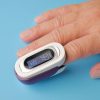No one wants to talk about it. Patients don't bring it up. Physicians don't ask. Meanwhile, millions suffer in silence as urinary incontinence erodes their quality of life. When it is discussed, all too often, patients are told--incorrectly--that it's a normal consequence of aging and that they should just get used to it. Misconceptions about incontinence abound among health-care professionals and the public alike.
At least 13 million Americans experience urinary incontinence, the involuntary leakage of urine sufficient to be a problem, and 11 million of them are women, according to the National Institute of Diabetes and Digestive and Kidney Diseases (NIDDK). Incontinence is also more common in older people. It's not surprising that about half of nursing home residents are incontinent since it's a major cause of institutionalization, according to numerous sources. But that doesn't mean it's a normal part of being a woman or of aging.
"Incontinence is never normal at any age," says Neil Resnick, M.D., chief of gerontology at Brigham and Women's Hospital, Boston, and an associate professor of medicine at Harvard Medical School. "It's treatable in the vast majority of people, most of whom have full continence restored. Most of the remaining people can at a minimum be improved," he says.
Despite its prevalence, urinary incontinence is widely underdiagnosed and underreported, and many health-care providers remain uneducated about it, according to a 1996 clinical practice guideline update from the Agency for Health Care Policy Research. It's also expensive. Americans spent about $27.8 billion on incontinence in 1995, according to NIDDK. The health-care impact is likely to increase as the baby boomers age.
Fortunately, the outlook is improving. This new generation of patients is less willing to let shame and embarrassment silence them, some doctors say. And there are more treatment options than ever before, including two new devices FDA approved just last summer. Treatment can improve the quality of life for millions of people.
"Patients are so overwhelmingly grateful--it's a thrill," says James M. Cummings, M.D., assistant professor of surgery in the division of urology at Saint Louis University School of Medicine. "Even if you only improve them some, even if you don't make them dry, they're still very grateful because they see a big difference in their lives."
Quality of Life
That's important because a variety of medical, emotional and social problems often accompany incontinence. Rashes, skin infections, pressure sores, and urinary tract infections are among the complications that can result from incontinence. More devastating are sleep disturbances, restricted social interactions, reduced sexual activity, loss of self-esteem, and depression. Employment may become difficult or impossible. Some people quit going out altogether, and many of the joys of life fade away.Water Works"This is a problem of major magnitude, even though it's not something people die from like cancer or heart disease," Cummings says.
Traditionally, people with incontinence have turned to various absorbent products, as well as deodorants, disinfectants, and skin-care products. The average person with incontinence spends $3,941 annually on the problem, according to NIDDK. Experts emphasize that absorbent products are not the only recourse for incontinence. Although absorbent products can be used as adjuncts to treatment or when treatments fail, people should understand the various treatment and management options available to them. Then, in consultation with their physicians, patients can decide which options best suit their lifestyle.
Also, dependence on absorbent products may decrease a person's motivation to seek medical help. That delay could be dangerous because certain serious conditions can cause incontinence--for example, tumors of the brain, spinal cord, bladder, or prostate. These tumors aren't common, but they're treatable only if found early. In any case, incontinence is a symptom that something has gone wrong.
Normally, the kidneys continually filter blood, removing waste and producing urine, which travels down tubes called ureters into the bladder, a muscular sac behind the pelvic bone. The bladder expands to store urine and contracts to expel it. The tube that empties the bladder is the urethra. A valve-like sphincter muscle encircles the top of the urethra at the bladder neck, preventing leakage. Spinal nerves coordinate the actions of the bladder and the sphincter.Diagnosis and TreatmentInfants empty their bladders by reflex. When the bladder fills and stretches beyond a certain point, it signals the spinal cord, which triggers the sphincter to relax and the bladder to contract. Young children gradually develop control over this process. Bladder stretching registers consciously as discomfort, and the brain learns to suppress the reflex. The more the bladder stretches, the more urgent the desire to urinate.
Incontinence can occur for many reasons. Urinary tract infections, vaginal infection or irritation, constipation, and certain medications may cause temporary incontinence. A variety of other problems can cause persistent incontinence: weakness of the bladder, the sphincter, or the muscles that support the bladder; overactive bladder muscles; a blocked urethra (from prostate enlargement or surgery); neurologic disorders; and immobility. Anything that damages the nerves or muscles at the bottom of the pelvis, or the pelvic floor, increases the risk. Anatomical differences between the sexes affect the underlying causes and the tendency for certain types of incontinence to develop.
There are several types of incontinence:
- Stress Incontinence, the most prevalent type, is common in women who have gone through childbirth because the muscles have been stretched. As the name suggests, urine may escape during a cough, laugh, sneeze, or any activity that temporarily increases pressure within the abdomen and thus on the bladder--even if the bladder isn't full.
- Urge Incontinence is the involuntary loss of urine associated with a strong desire to urinate. The person can't control urination long enough to get to the toilet in time.
- Mixed Incontinence, the coexistence of stress and urge incontinence, is more common in older women. Often one is more bothersome than the other.
- Overflow Incontinence is the result of chronic urine retention in people who can't empty their bladders. The bladder is always full, leading to frequent or constant dribbling. It's more common in men, often because of an obstruction such as an enlarged prostate. Removing the obstruction restores continence. This type of incontinence can also occur as a result of nerve damage.
- Unconscious or Reflex Incontinence is the loss of urine without warning or sensory awareness. It's usually the result of neurological disease or injury.
- Functional Incontinence occurs in people with normal urinary control who can't get to the toilet in time because their movement is slowed by arthritis or other physical or mental disorders.
The first step toward successful treatment is to determine the type of incontinence and the cause. A doctor's evaluation usually includes a physical examination, medical history, and urine tests. The patient may be asked to keep a bladder record and may be referred to a urologist or urogynecologist for more specialized follow-up testing.New DevicesTreatment options fall into four broad categories--behavioral, devices, medications, and surgery. Generally, those options that are least invasive, dangerous or expensive are tried first.
Behavioral options require patients to learn new behaviors to help them regain control over urination. Behavioral methods work best with motivated patients willing to invest time and effort. Success rates are high for those who persist--most improve and many become dry. Behavioral treatments are generally free of side effects, noninvasive, and don't limit further treatment options.
For people with urge incontinence, bladder or habit training can help reassert control over the bladder. The patient is instructed to urinate at intervals, say, every hour or so. After achieving dryness for a few days, the interval increases. This cycle continues until the patient attains an acceptable interval of several hours. Other steps may include eliminating dietary caffeine and reducing fluids in the evening to improve sleep. Limiting overall fluid intake is not recommended, however, to avoid dehydration.
The goal with stress incontinence is to increase resistance in the sphincter and urethra. Most women see significant improvement, and many achieve dryness, with pelvic muscle exercises (PMEs), also known as Kegel exercises. PMEs are performed by tightening the pelvic floor muscles as if to control urination or defecation. Patients are generally told to sustain a contraction for at least 10 seconds, followed by an equal period of relaxation. The exercises should be performed about 30 to 80 times a day for at least eight weeks. Older adults may require longer training. Sometimes PMEs are combined with biofeedback to help establish better awareness of muscle function.
"Patients should not give up on the exercises too quickly," stresses Rao Nimmagadda, Ph.D., in FDA's urology devices branch.
It may take awhile to determine whether PMEs help. And, as with any exercise program, the beneficial effects last only as long as the exercise continues. For some people, electrostimulation via a small rectal or vaginal probe may help in building or maintaining muscle tone. These devices passively exercise the pelvic floor muscles with painless electrical pulses.
Two new treatment methods became available last summer, when FDA reviewed for marketing two new prescription devices for stress incontinence in women. UroMed Corp., of Needham, Mass., makes both the Reliance Urinary Control Insert, sometimes called a urethral plug, and the Miniguard Patch. The Reliance Insert is a single-use, balloon-tipped cylinder about one-fifth the size of a tampon that's placed in the urethra with an applicator. A gentle push fills the small balloon inside the bladder with air. The balloon holds the device in place and prevents leakage. When the woman wishes to urinate, she pulls a string to deflate the balloon, then removes the insert. After urinating she may insert a new device.Other TreatmentsSince the device is inserted into the urethra, it is associated with a fairly high infection rate. According to the manufacturer, urinary tract infections were more common during the first month of the trial and diminished as women learned how to use the device.
"It's not for everybody. It has to be individualized," says Grannum Sant, M.D., chair of urology, Tufts University School of Medicine, in Boston, who helped test the device. For women in the clinical trial, inserting the device became easy, Sant says, and their quality of life improved considerably as they resumed aerobics, biking, dancing, and other physical and social activities. Many women, Sant says, will probably use the device only during activities they know cause leakage. "In real life it's not going to be used constantly around the clock like we did in the study. Therefore the complication rate and discomfort rate--which was acceptable--is going to be even less," Sant says.
The other new device, the Miniguard Patch, is expected to be on the market later this year. It is a completely external, single-use foam pad a little bigger than a postage stamp. The patch is coated with a gel-like adhesive on one side and fits between the labial folds over the opening of the urethra, where it provides opposing pressure and a barrier to leakage. The patch is removed for urination and a new one applied afterwards.
For women used to wearing cumbersome pads, "The patch is a neater way of doing it. They don't feel so bulky," says Patricia Burns, Ph.D., a registered nurse and dean of the School of Nursing at the University of South Florida, in Tampa. Burns, who also maintains an incontinence practice, helped test the device.
Medications are another treatment option. "I found in my practice that a lot of people can be treated with medication," says Dan Shames, M.D., a urologist in FDA's reproductive and urologic drug products division who had a clinical practice for nearly 20 years.Education Is KeyIn general, the drugs available are approved only for urge incontinence. These include anticholinergics, such as propantheline, and antispasmodics such as oxybutynin. They work by relaxing the bladder muscles to stop abnormal contractions.
Unfortunately, some drugs have numerous side effects, such as severe dry mouth, blurred vision, and constipation. "A lot of people stop using them because they can't handle the side effects at the level that gives them relief," Shames says. But, he adds, drug companies are trying to develop drugs that work as well or better with fewer adverse effects. "There are more approval requests for new drugs for incontinence," he says.
Some women don't experience incontinence until after menopause, and for them estrogen replacement may help. The hormone estrogen plays a role in keeping the lining of the urethra plump and toned.
In some cases, surgery to correct anatomical problems or implant devices remains the best treatment. Most people do not need surgery, but of those who do most become continent again. For example, surgery can remove blockages. Or sometimes collagen is injected around the urethra. Collagen, a naturally occurring structural protein, is used to add bulk to the surrounding tissue, thus narrowing the urethra and increasing resistance to urine flow. This method seems to work better in women.
For women with stress incontinence, other surgery options include improving the bladder neck position, and supporting or replacing severely weakened pelvic muscles. People with extremely small bladders may be candidates for an enlargement operation. Implanting an artificial urinary sphincter may be appropriate in some people. For people who are incontinent because of faulty nerves to the bladder, an implanted stimulation device is under investigation.
A last alternative is one of two types of catheters. Both are placed into the bladder through the urethra to drain the bladder. The Foley catheter is left in place; with an intermittent catheter, the patient inserts it as needed.
Despite how prevalent and treatable incontinence is, a variety of national and international professional organizations, including the National Institutes of Health, have noted a lack of professional and public knowledge about incontinence and its treatment. "Most physicians have never had any education about incontinence," Resnick says.Sant agrees, but he has noticed the beginning of an encouraging trend. "We're seeing a change in the approach, not only on the part of physicians, but also in the expectations and demands of the patients--which I think is excellent," Sant says. "Women are now saying, 'Look, we don't have to live with this.'"
Apparently, the word is spreading that incontinence is neither inevitable nor shameful but instead treatable or, at least, manageable.
Facing Facts About Urinary Incontinence
Myth: There's nothing that can be done about it.
Fact: There's a lot that can be done. In the majority of cases, continence can be restored or improved with behavioral techniques, devices, drugs, or surgery.
Myth: Incontinence is a normal consequence of aging.
Fact: Incontinence is never normal at any age, according to Neil Resnick, M.D., chief of gerontology at Brigham and Women's Hospital, Boston. Age-related changes in the lower urinary tract may make older people more likely to experience incontinence, but for most older people, even the very old and frail, incontinence can be treated successfully.
Myth: The only successful treatment is surgery.
Fact: The majority of patients can be helped with other treatments.
Myth: Incontinence is inevitable for women who have given birth.
Fact: Giving birth can injure or weaken the pelvic region, but that doesn't mean incontinence is inevitable. Exercises often help.
Myth: A little leakage sometimes, such as during a sneeze or cough, is no big deal. It's not worth telling the doctor about.
Fact: If urinary leakage is troubling at all, it's worth mentioning to the doctor. People can learn to manage the problem--or be free of it altogether.
Where to Turn for Help
Here are some organizations that can give additional information and support.National Association For Continence (formerly Help for Incontinent People)
P.O. Box 8310
Spartanburg, SC 29305-8310
(1-800) BLADDER
http://www.nafc.org/Simon Foundation for Continence
Box 815
Wilmette, IL 60091
(1-800) 23-SIMONAgency for Health Care Policy and Research
Publications Clearinghouse
P.O. Box 8547
Silver Spring, MD 20907
(1-800) 358-9295
http://www.ahcpr.gov/FDA / FDA Consumer









